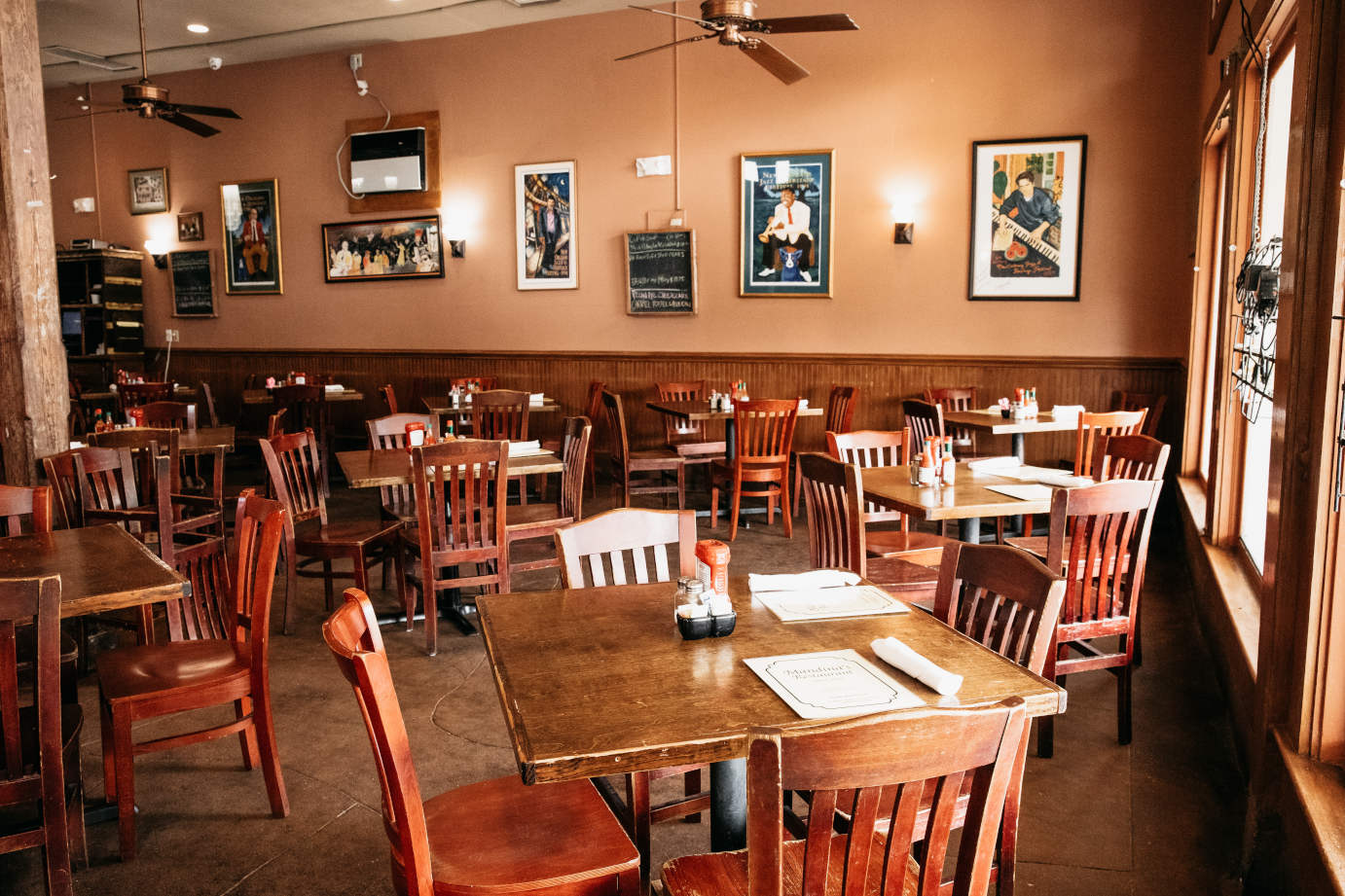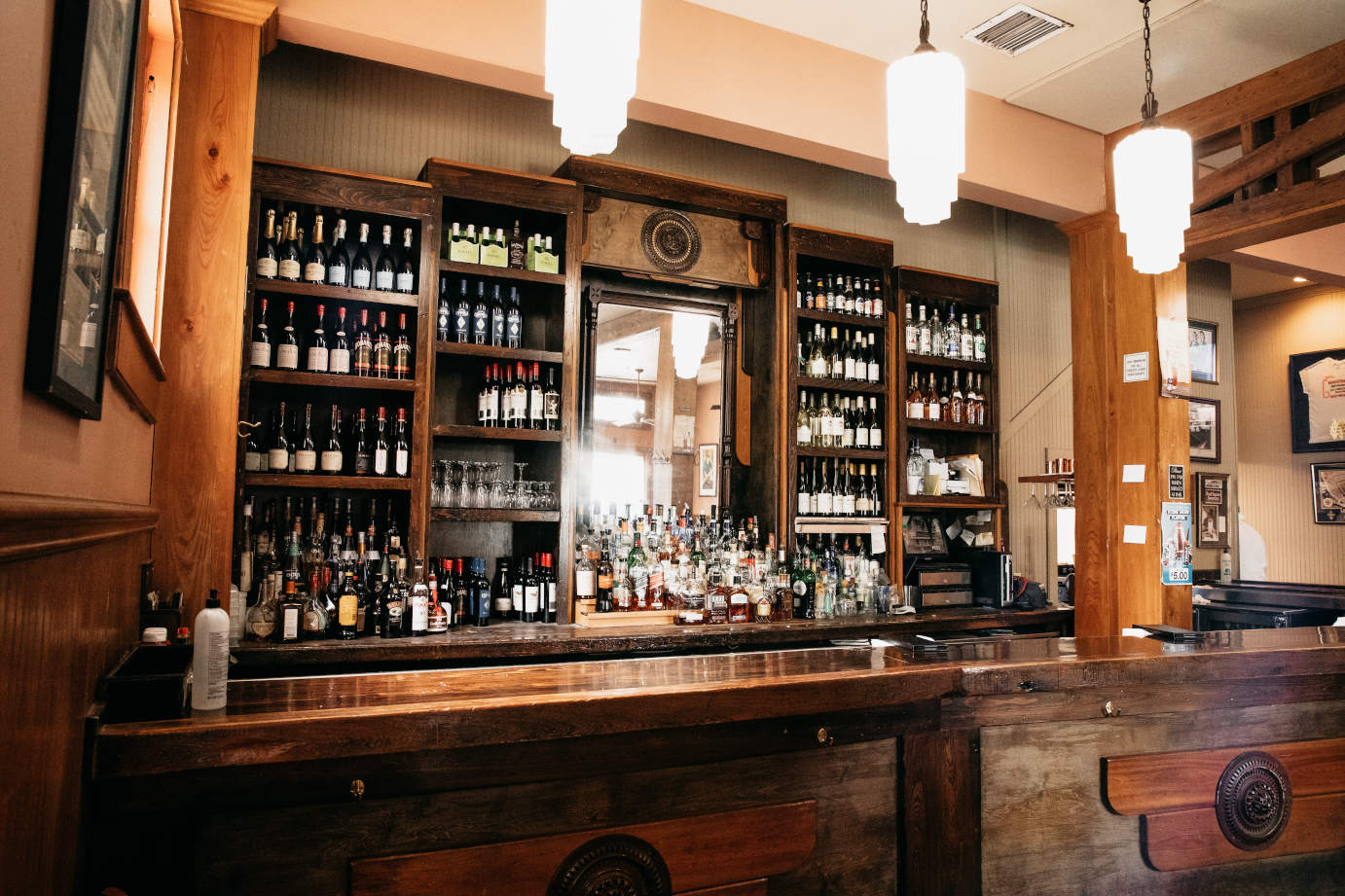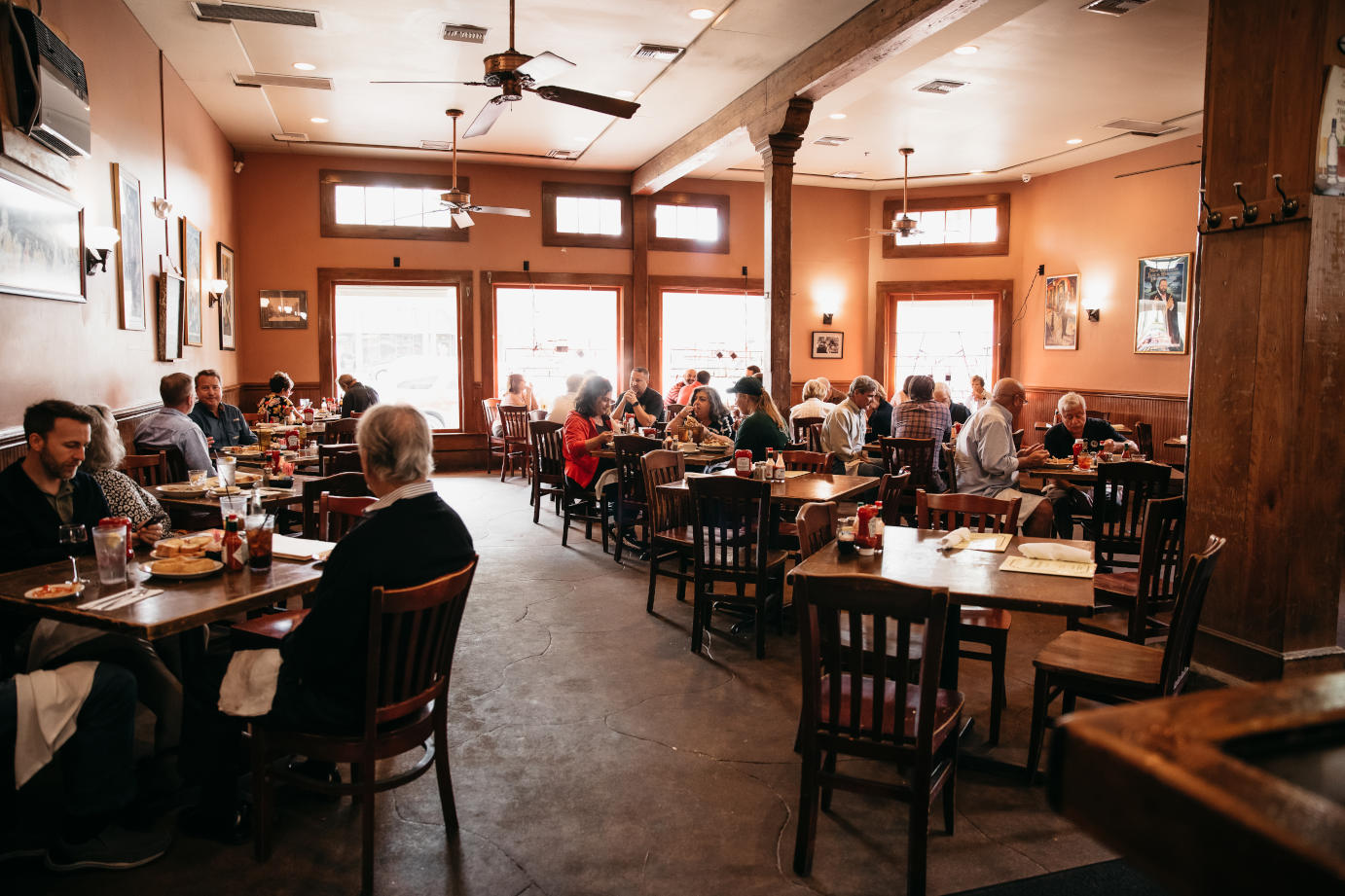
About us
Italian and seafood home-style cooking!
Our History Pre-Katrina: Sebastian Mandina came from Palermo, Italy in 1898, to open the building at 3800 Canal Street as a grocery store. It was a favorite of the Italian immigrants who’d come from New York to prosper off of the farmlands of Southern Louisiana. Sebastian was an entrepreneur who saw the need for a store in the largely residential Mid-City area. His two young sons, Anthony and Frank, grew up in the family business throughout the early 1900’s. The boys would see Mandina’s evolve from a grocery store to a pool-hall that sold sandwiches. It was Anthony and Frank who would turn the pool-hall into today’s Mandina’s Restaurant in 1932. The family continued to live upstairs. Frank lived on one side; Anthony and his wife, a tough redhead named Hilda, lived on the other. Anthony tended bar while Hilda managed the dining room. “Hilda would come out and talk to all the people, be nice with everybody. It just evolved into a neighborhood restaurant,” describes Cindy Mandina, the restaurant’s fourth generation proprietor.
During World War II, Frank and Anthony went to serve their country and Hilda ran the restaurant. “In the 1940’s that was unheard of,” explains Cindy, “a woman running a restaurant.” Despite the pressures of operating a popular New Orleans restaurant, Anthony and Hilda managed to have one child, Anthony Thomas Mandina, Cindy’s father. “My father was born and raised upstairs,” says Cindy, “he grew up working in the restaurant. He went to St. Aloysius High School, Loyola for college, and he got married. He worked in the restaurant as a bartender.” Cindy describes how her father ventured into other professions, including light bulb sales, and life insurance. “Then my grandfather, Anthony, had a heart attack in 1972. That was when my dad started working full time with my grandmother, Miss Hilda.”
Cindy has few memories of her grandmother and great uncle. “My Uncle Frank died in ‘85. Miss Hilda died in 1979. I didn’t know my grandfather because I was born in ‘71. As far as my grandmother, yeah, she was here. We would come visit her Sundays after we’d go to church. My Great-Uncle Frank, I knew him because he lived upstairs and you’d see him once a week. He was a nice man.” Two daughters were born to Tommy and his wife: Cindy and Valerie. The girls were not exposed to the hectic restaurant environment. Sundays were the exception. “We would come and eat with my mom’s mother and that was it. He didn’t bring us around the restaurant.” That wouldn’t last long.
Before Cindy was ten-years-old she was seduced by the fast-paced restaurant industry. Cindy and her friend started bussing tables for Mr. Henry, the waiter. “He was so patient, even though I knew he wanted to curse me out.” She laughs, “I thought I was doing something.” Cindy worked for her father during the day while attending Loyola at night. She would answer the telephone, help with salads, and do to-go orders. When Cindy received her MBA, she took on Mandina’s full-time. “I had a passion for it. I liked the business. I liked the excitement. I liked the controversy.” Cindy was the subject of much talk. “I caused controversy when I started working here. I was 24-25 years old. I was the bosses daughter,” she explains. She often heard comments like, “who in the hell is this young girl?” She had replaced management that had been there for twenty-five years. “What right did she have to do that?,” they argued. “The first two to three years working here were very hard. I went home and cried a lot, but it made me a strong person,” she remembers. Cindy recalls the growing pains associated with learning a family business. “My father was harder on me than he would be with anyone else, because he wanted to break me and make me strong, and able to handle it. I would go upstairs and he would criticize me. He wouldn’t do that to other management. Plus I was a woman in this industry.”
The success of Mandina’s was exploding. “Mid-City was up and coming. The streetcar had come back,” explained Cindy. She points outside at the newly returned Canal streetcar, clattering down the track. “Look right now, the streetcar’s coming!” Mid-City pre-Katrina, was growing in popularity. There was a concern that Mandina’s wouldn’t come back after the storm. Cindy insisted on it. “It was a financial risk, but I had to reinvest in my city.” When asked what Mandina’s represents, Cindy replies that Mandina’s is the quintessential neighborhood restaurant. “You get the Miss Hilda Old Fashion’ the same as if she had made it herself.” Yes, the interior looks classier. The Katrina flood water altered Mandina’s appearance. Cindy makes no apologies, “I’m trying to bring it back to the way it looked back in 1930. Let’s bring it back to the bare bones of the thirties.”
Don’t be mistaken by the facelift; the food, the atmosphere, and most of the employees are the same. “There are things on the menu that have been on the menu for 75 years. Bruccilone was always on the menu; my grandfather, Anthony, would always cook that.” Mandina’s still boasts the waning trend of house charges, and substitutions. “My grandmother would come in, sit down, and talk to you, have a conversation, feed the kids, and get them situated,” explains Cindy, “You took care of the neighborhood people and the people that would come in here. Just take care of the locals, cater to their needs and desires. We’re a place that if you substitute something, we’ll do it. We have no problem with substitutions and, ‘I don’t want macaroni. I want double string beans. I need a bowl of lima beans, instead of a cup. Can you do that?’ I say, ‘Sure! We’ll take care of you. You been coming here for twenty years.’ That’s what we’re all about.”
Our History Post-Katrina: It was 10:51, February 7th, 2007. The sun filtering through the blinds showed the steady arrival of customers. It was 10:55, five minutes until Mandina’s would open its doors for the first time in 18 months. It’s return was a sign of hope for Midcity, an area still limping towards recovery after taking six feet of Katrina’s floodwater.
The bartenders stocked the bar, knowing they would feel the first pinch of a swelling crowd. The general manager, Martial, looked to Cindy Mandina, the fourth generation owner of Mandina’s, and asked, “Are you good?” She looked at him with concentration, “I’m absolutely good.” The media was there, snapping pictures of the bustling kitchen staff. The chef of 25 years, Chef Isadore, wore his signature captain’s hat. Through the months, he’d watched over every aspect of the rebuilding of his kitchen. Today would be the payoff. A line-cook pulled a pan from the oven with one of Mandina’s signature dishes, stuffed bell peppers.
Waitress, Joy Arbuckle, the first female server hired at Mandinas twenty-five years earlier, took the last sip of her drink. Outside the door, Teryl Flettrich held a coveted position at the front of the line. She was waiting for her husband, David. He and his father, Harold ate at Mandina’s every day for seventeen years. Behind them, the crowd twisted around the building. Word had gotten out that Mandina’s was putting the finishing touches on the restaurant. The bright banner with red letters that promised, “We will be back,” still hung on the pink building.
As the clock hit the 11:00 hour, Cindy and Martial moved to the doorway. “Open the door,” she said. Teryl, an agent for Keller-Williams, was first in. “Good seeing you,” said Cindy as she shook the hands of people entering. Customers hugged wait-staff. Teryl threw her arms around Murphy, one of Mandina’s returning waiters. Most of Mandina’s old staff had left other jobs to come back to their Mandina’s home.
The dining room filled up quickly. Kevin Manning, a Mandina’s bartender for sixteen years, made Miss Hilda Old Fashioned, after Old Fashioned. “We’re just so happy to be here,” said one woman as she reached for her drink. In the dining room Mr KJ, a Mandina’s waiter for forty years, set a bowl of gumbo in front of one of his regulars. At another table, Liz Hampton sat with Virginia and Nick Lorusso. Friends of the family, they panned the crowd for Cindy or Tommy. “We’re so looking forward to this,” said Nick.
In the kitchen, Cindy and Tommy worked side-by-side as the order tickets came pouring in. Tommy stood with his hands on his hips. “Fried chicken down, folks,” said Cindy. Diane Dagel, a new server, passed behind Cindy with a tray of appetizers including steaming turtle soup. Cindy called out a side subsitution, “no lima beans, string beans!”
The upper dining room was at capacity. A customer studied the changes in the restaurant. “They took advantage of the catastrophe to improve the business,” you could hear her say. A local woman reached into her pocket for her camera-phone, “I don’t think it lost its feel at all.” A man in a suit stood at the bar drinking a sazarac, “It was quaint before, but it’s nice now!”
The doorway was swollen with traffic. Two more names went on the waiting list. “Much nicer, much nicer,” said another loyal customer passing a Times Picayune reporter. Hollas Young, a patron of 40 years stood at the bar eating a steak. Flowers and other gifts came in, further crowding the bar. Nearby, a little girl named Theresa took pictures from her mother’s camera. She looked a lot like a nearby picture of the young Cindy Mandina. Theresa’s mother, Valerie, stood eyeing the grand opening with a sense of pride. She looked down to her daughter, the youngest Mandina present. Tommy Mandina came from the kitchen. The dining room erupted with applause.


